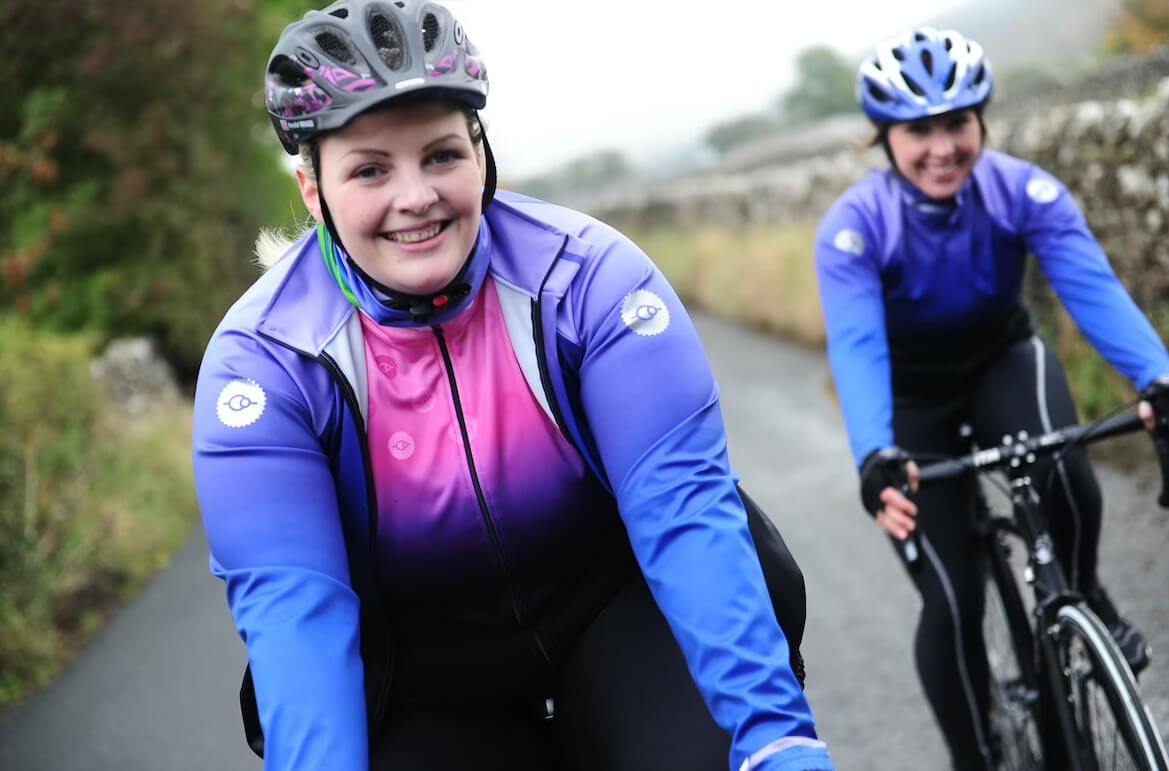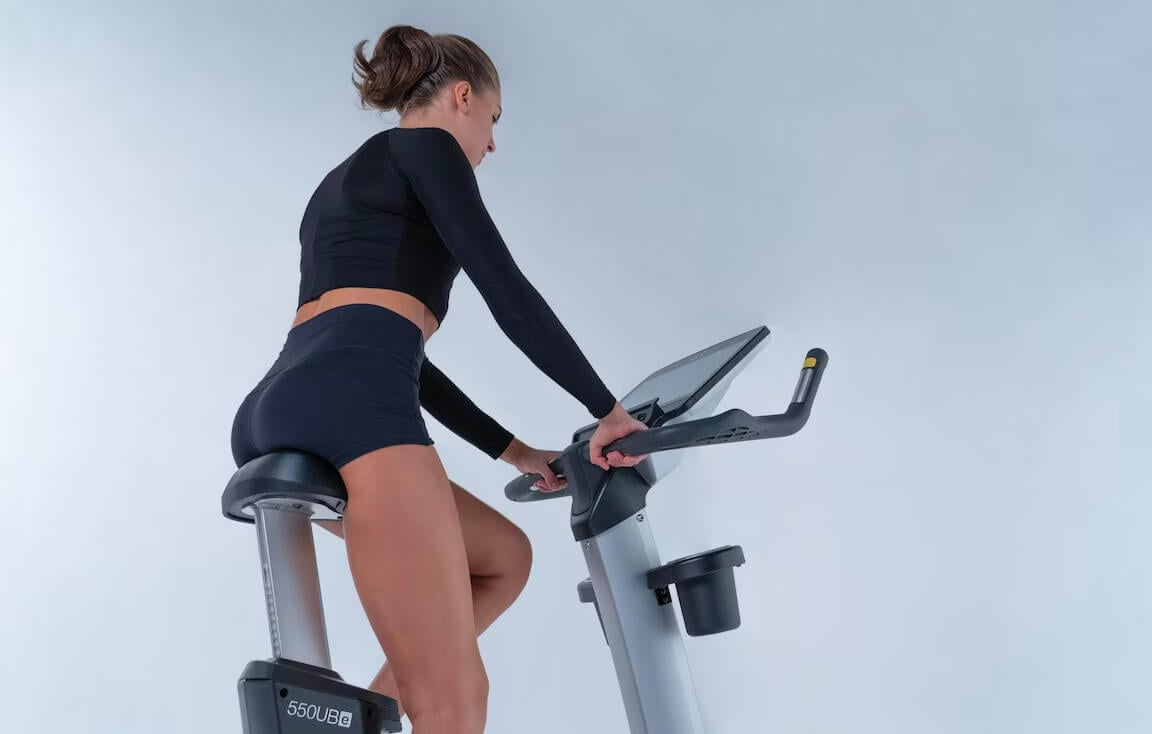It is recommended to do about 30 minutes of exercise for 5 days or 60 minutes for 3 days every week to improve and maintain your physical, mental, and reproductive health. Any form of exercise can be done including running, weight lifting, sprinting, rope jumping, swimming, or cycling.
Among all these exercises, cycling is good for women for various reasons as it is easy to do, can be done at home or outdoors, can also be used as a means of commuting, and have unlimited benefits for women’s health. Additionally, it does not put stress on joints as do other exercises.
Here we are going to discuss 13 benefits of cycling for ladies along with the scientific evidence so that our pretty ladies start cycling often and lead a better life. So, without further ado, let us get to start your exercise routine with cycling.
Type of Cycling
There are mainly 2 types of cycling. Both are further divided into a range of options for you. So, you can do one of them regularly or perform both alternatively to keep the thrill alive.
Outdoor Cycling

Outdoor cycling is using a mobile cycle in outdoor premises like parks, roadsides, river banks, mountains, and more. The good thing about outdoor cycling is that you can also take the cycle to your workplace or school every day killing two birds with one stone.
Additionally, it allows you to enjoy the beautiful scenery and fresh air as you work out. You can also plan cycling trips with your friends at weekends.
Indoor Cycling

The second form of cycling is indoor cycling. A stationary bike is used in indoor cycling. Such bikes take a small space and exercise can be done as you watch TV or talk to your family without having to move even an inch physically.
There are several types of indoor cycles with upright, recumbent, dual-action, and air-bike being the most popular ones. Also, if you want to know the features of an indoor bike, give
Peloton vs Nordictrack
a read.
Benefits of Cycling for Women’s Health
1. Weight Loss
The major thing women of the present day are concerned about is their increasing weight. Appearance aside, obesity particularly abdominal obesity causes chronic diseases like hypertension, diabetes, and more.
So, cycling burns fats and helps in losing weight as explained in
can you lose belly fat by cycling
[1]. Furthermore, you can do other
proven exercises to lose belly fat
to keep obesity in check.
2. Low-Impact Exercise
Cycling is a low-impact exercise. It means that it puts no stress on vulnerable joints like ankles, knees, and hips. Rather it improves the movements of these joints. So, 30 minutes of cycling every day can do wonders for the health of people with joint problems and lifestyle diseases.
Also, it is good for women with arthritis or ankylosing spondylitis.
3. Strengthens Legs

In addition to burning the fat in the belly region, cycling involves the muscles of the lower body including the back and legs. So, regular cycling helps strengthen the muscles of calves, thighs, and buttocks including hamstrings, quadriceps, and glutes.
As a result, it improves your ability to stand or walk for a long time. So, cycling is especially good for people who stay on their toes all day.
4. Better Cardiovascular Health
Cycling is also a form of cardio exercise. It increases the heart rate, improves the blood-pumping capacity of the heart, strengthens cardiac muscles, regulates breathing patterns, and finally improves overall cardiovascular and respiratory health.
Consequently, the risk of heart and vascular diseases like myocardial infarction and hypertension is reduced. Moreover,
research
elaborates on the association between cycling and heart health [2].
5. Gets You in the Shape
Cycling is a great exercise if you are aiming for a good physique. It removes belly fat and excessive fat in other regions of the body. Additionally, it strengthens and tones the muscles of the legs, limbs, abdomen, and back. So, your body shape becomes better with regular cycling.
A study
shows how cycling is good for building, toning, and strengthening muscles [3].
6. Increases Stamina

If you become breathless after running a lap or two or see yourself panting after climbing a few staircases, cycling is the perfect exercise to increase your stamina without knowing.
An hour of biking each day helps in building stamina and improving endurance so that you can run, walk, or do your daily activities without being tired.
7. Improves Gut Health
Not only the muscles and weight loss, cycling is also good for the internal viscera of the human body. Just like cycling strengthens the skeletal muscles, it also boosts the energy of smooth muscles in the gut improving peristalsis.
So that digestion is improved and bloating is decreased. It also has beneficial effects on bowel habits as determined in
a study
[4].
8. Better Bone Density
If you prefer outdoor cycling or you have your indoor cycle set at a place where sun rays can reach you, your bones are going to be thankful. Biking early in the morning in the presence of sunlight lets your body synthesize vitamin D.
This vitamin D then absorbs minerals and increases bone density and health as explained in a
scientific article
[5].
9. Improves Immunity
People who have a fit body tend to have fewer diseases. One reason is the presence of an adequate amount of fats and cholesterol in the blood. The second reason is a healthy immune system that fights off pathogens.
Cycling stimulates the production of immunity-producing cells including white blood cells in the body. Additionally, it strengthens the immune system and prevents infections as stated in
a study
[6].
10. Better Mental Health

Cycling is good for physical health as well because it lets you take off the worries from your mind when you are working out. It also tires your body at the end of the day helping you fall asleep as soon as you get to bed.
Moreover, cycling stimulates the release of neurotransmitters including dopamine and serotonin in the body that alleviates stress, anxiety, or depression, and makes you feel happy as you can read the
article on mental health
[7].
11. Protection Against Cancer
Cycling also regulates the level of hormones in the body, especially after menopause. So, it reduces the risk of cancers caused by hormone disturbance like breast cancer.
Women who cycle regularly even in their later years are less likely to suffer from cancer.
12. Treatment of Menstrual Cramps
Ladies often pause exercise during their menstrual cycle because of the bleeding and cramps, right? But let us tell you that cycling relieves the pain caused by period cramps.
A
study on primary
dysmenorrhea illustrates how aerobic exercises like cycling can be a non-pharmacological remedy for pain in periods [8].
13. Enhances Fertility
Obesity and hormonal disturbance are one of the two most common causes of infertility as they interfere with ovulation. Cycling deals with both concerns. So, it can improve the chances of your getting pregnant naturally.
Additionally,
research on physical exercise and fertility
explains how a moderate amount of exercise is helpful for fertility while intense exercise in non-athlete women may increase the risk of infertility [9].
14. Helps in Pregnancy
Yoga is one of the most preferred forms of exercise in pregnancy as it is a low-impact body workout. Similarly, cycling can be the go-to exercise for women with a fetus as it helps the body stay fit, heart healthy, and muscles strong.
Additionally, it can also help in normal delivery rather than C-section.
Risks And Safety Considerations

While cycling is great, it can lead to injury. So, you can follow these safety precautions to avoid risk factors associated with cycling.
-
Always warm up for a few minutes before doing any exercise including cycling so that your body is ready to take what is to come and not experience no frozen muscles during the workout. Moreover, you can know more about the
importance of warmup exercises
here. -
If you are going for an outdoor cycling trip, it is necessary to wear the safety gear of cycling including helmet, elbow pads, and knee pads. This is to ensure that even if you fall, you suffer from critical injuries.
-
Cycling is all about balance. Although balance is also necessary for indoor cycling, it is more important when you are out in the field because there is a chance of injuring yourself by falling when you fail to maintain balance. So, keep your eyes on the track and your mind concentrated.
-
In indoor bikes, learn to set the bike according to your exercising ability and also gradually increase the levels so that your health keeps on improving. In addition to the digital setting, the placement of seats and handlebars is also important.
-
Cycling stimulates metabolism and the utilization of water in the body. Water is also lost through sweating. So, make sure you take enough water as you cycle. Check out
hydration and exercise
to know how much water you need and why it is important. -
Lastly, breaks are also essential. If you are doing a 30 or 60 minutes round of cycling, it is not mandatory to keep going throughout that time, you can take breaks whenever you feel tired and then resume your workout.
Summary
Cycling is a low-impact exercise that is good for women as it helps in losing weight, gaining muscles, boosting immunity, strengthening bones, preventing indigestion, and making the heart healthy.
Additionally, it is beneficial for the reproductive and sexual health of women because it relieves menstrual syndrome, helps in increasing fertility, protects against breast cancer, and improves mental health as well. Also, it is safe in pregnancy and women of all ages can cycle their way to a healthy lifestyle.
References
1. Dr. Anika Dhanokar and Pallavi Suyog Uttekar. Can You Lose Belly Fat By Cycling? Health and Living Health Centre. Medicine Net.
https://www.medicinenet.com/can_you_lose_belly_fat_by_cycling/article.htm
2.
Mathias Ried-Larsen, PhD
;
Martin Gillies Rasmussen, PhD
;
Kim Blond, MSc
. Association of Cycling With All-Cause and Cardiovascular Disease Mortality Among Persons With Diabetes. July 19, 2021. The European Prospective Investigation Into Cancer and Nutrition (EPIC) Study. Jama Internal Medicine Network.
https://jamanetwork.com/journals/jamainternalmedicine/fullarticle/2782014
3.
Hayao Ozaki
,
J P Loenneke
,
R S Thiebaud
,
T Abe
. Cycle training induces muscle hypertrophy and strength gain: strategies and mechanisms. March 2015. National Library of Medicine. PubMed.
https://pubmed.ncbi.nlm.nih.gov/25804386/
4. G J Oettle. Effects of Moderate Exercise on Bowel Habits. Aug 1991. National Library of Medicine. PubMed.
https://pubmed.ncbi.nlm.nih.gov/1885077/
5.
Eamon Laird
,
Mary Ward
,
Emeir McSorley
,
J.J. Strain
, and
Julie Wallace
. Vitamin D and Bone Health; Potential Mechanisms. July 2010. Nutrients MDPI. PubMed Central.
https://www.ncbi.nlm.nih.gov/pmc/articles/PMC3257679/
6.
Matheus Pelinski da Silveira
Kimberly Kamila da Silva Fagundes
,
Matheus Ribeiro Bizuti
,1
Édina Starck
,
Renata Calciolari Rossi
, and
Débora Tavares de Resende e Silva
. Physical exercise as a tool to help the immune system against COVID-19: an integrative review of the current literature. July 29, 2020. Springer Nature. Pubmed Central.
https://www.ncbi.nlm.nih.gov/pmc/articles/PMC7387807/
7.
Ashish Sharma
, M.D.,
Vishal Madaan
, M.D., and
Frederick D. Petty
, M.D., Ph.D. Exercise for Mental Health. 2006. Official Journal of Association of Medicine and Psychiatry. PMC PubMed Central.
https://www.ncbi.nlm.nih.gov/pmc/articles/PMC1470658/
8.
Zahra Mohebbi Dehnavi
,
Farzaneh Jafarnejad
,
Zahra Kamali
. The Effect of aerobic exercise on primary dysmenorrhea: A clinical trial study. Jan 10, 2018. J Edu Health Promot. Journal of Education and Health Promotion.
https://www.jehp.net/article.asp?issn=2277-9531;year=2018;volume=7;issue=1
9.
S L Gudmundsdottir
,
W D Flanders
,
L B Augestad
. Physical activity and fertility in women: the North-Trøndelag Health Study. Dec 2009. National Library of Medicine. PubMed.
https://pubmed.ncbi.nlm.nih.gov/19801570/

 By myulikeadmin
By myulikeadmin



